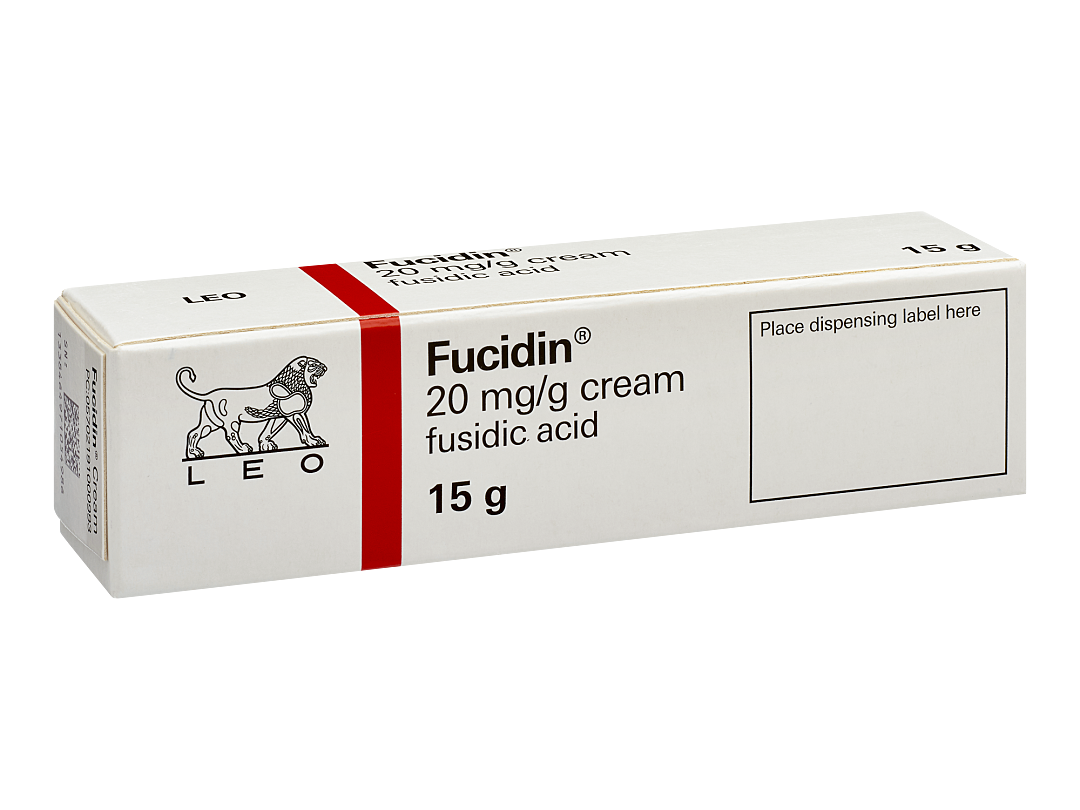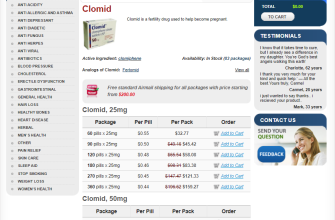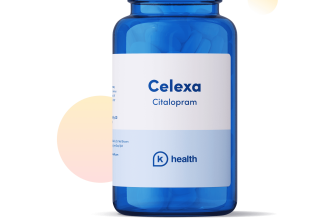Need a Fucidin alternative in the USA? Consider mupirocin ointment. It’s a topical antibiotic, similar in action to Fucidin (fusidic acid), effectively treating bacterial skin infections like impetigo and folliculitis.
However, always consult your doctor before switching treatments. They can assess your specific needs and recommend the most appropriate medication based on your medical history and the nature of your infection. A proper diagnosis is paramount for successful treatment.
Prescription options beyond mupirocin include other topical antibiotics or oral antibiotics, depending on the severity of your condition. Your physician will guide you to the best choice. Over-the-counter alternatives may provide temporary relief for minor infections, but for persistent or severe skin problems, professional medical care is crucial.
Remember: Self-treating can delay proper treatment and potentially worsen the infection. Seeking professional advice ensures you receive the correct medication and dosage for a faster recovery.
- Fucidin USA Alternatives: A Comprehensive Guide
- Topical Antibiotics
- Other Treatment Options
- Choosing the Right Alternative
- Disclaimer:
- Understanding Fucidin’s Active Ingredient and its Uses
- Over-the-Counter Alternatives for Minor Skin Infections
- Treating Mild Infections
- Managing Symptoms
- When to Seek Professional Help
- Prescription Alternatives for More Severe Infections
- Comparing Costs and Availability of Fucidin Alternatives
- Potential Side Effects of Fucidin and its Alternatives
- When to See a Doctor: Recognizing Serious Skin Infections
- Choosing the Right Treatment: Factors to Consider
Fucidin USA Alternatives: A Comprehensive Guide
Consider these alternatives to Fucidin, depending on your specific needs and the severity of your skin infection:
Topical Antibiotics
- Mupirocin (Bactroban): A common topical antibiotic ointment effective against many bacterial skin infections. Follow your doctor’s instructions on application frequency and duration.
- Bacitracin: Another topical antibiotic ointment often found over-the-counter. It’s effective against Gram-positive bacteria. Consult a doctor if symptoms worsen.
- Gentamicin: This antibiotic cream is prescribed for more severe bacterial infections. A doctor will determine its suitability.
Always check for allergies before using any new topical medication.
Other Treatment Options
- Oral Antibiotics: For more extensive or severe infections, your doctor may prescribe oral antibiotics like erythromycin or clindamycin. Complete the entire course, even if symptoms improve.
- Anti-fungal Creams: If the infection is fungal rather than bacterial (which is sometimes mistaken), then an anti-fungal cream like clotrimazole or miconazole is necessary. A doctor can confirm the correct diagnosis.
Choosing the Right Alternative
- Identify the infection: Bacterial or fungal? A doctor’s diagnosis is crucial.
- Severity of the infection: Minor skin irritation may respond to over-the-counter options; severe infections require prescription medications.
- Personal allergies: Check for any known allergies to antibiotics or other topical treatments.
- Doctor consultation: Always consult a physician for proper diagnosis and treatment plan, especially for recurring or persistent infections.
Disclaimer:
This information is for guidance only and does not constitute medical advice. Always consult a healthcare professional before starting any new treatment.
Understanding Fucidin’s Active Ingredient and its Uses
Fucidin contains fusidic acid, an antibiotic that fights bacterial skin infections. It works by preventing bacteria from producing proteins necessary for their survival and reproduction. This targeted action makes it effective against a range of common skin infections.
Doctors prescribe Fucidin for conditions like impetigo, folliculitis (infected hair follicles), and infected wounds. It’s also used to treat secondary bacterial infections accompanying eczema or psoriasis. Remember that it’s only effective against bacterial infections, not viral or fungal ones.
Apply Fucidin exactly as your doctor instructs. Typical application involves a thin layer to the affected area two or three times daily. Cleanse the affected skin before applying the cream. Continue treatment for the full prescribed duration, even if the infection appears cleared. This prevents recurrence.
Potential side effects are generally mild and include skin irritation or allergic reactions. Inform your doctor immediately if you experience any unusual reactions. Fucidin is not suitable for everyone. Consult your doctor or pharmacist to assess suitability and discuss potential interactions with other medications.
Always seek professional medical advice before using any medication. This information provides general guidance and doesn’t replace consultation with a healthcare professional.
Over-the-Counter Alternatives for Minor Skin Infections
For minor skin infections like impetigo or minor cuts and scrapes, consider applying topical antibiotic ointments containing bacitracin or neomycin. These are widely available in most pharmacies.
Treating Mild Infections
Bacitracin is a common choice for superficial wounds. Apply a thin layer to the affected area several times daily, keeping the area clean and covered with a sterile bandage. Neomycin, another antibiotic, is effective against a broad spectrum of bacteria, but allergic reactions are possible. Always check the label for ingredients and potential side effects. If irritation occurs, discontinue use.
Managing Symptoms
Antiseptic washes, such as those containing benzalkonium chloride or povidone-iodine, can help clean minor wounds and prevent infection. Remember to follow product instructions carefully. For pain and inflammation, over-the-counter pain relievers like ibuprofen or acetaminophen can offer relief. Always consult a doctor if the infection worsens or doesn’t improve within a few days.
When to Seek Professional Help
Seek immediate medical attention if you notice signs of a severe infection, such as spreading redness, increased pain, fever, or pus. Deep wounds or infections affecting large areas of skin also require professional care. A healthcare professional can accurately diagnose the infection and provide appropriate treatment.
Prescription Alternatives for More Severe Infections
If Fucidin isn’t sufficient, your doctor might prescribe a different antibiotic, depending on the specific bacteria causing the infection. Common alternatives include clindamycin, erythromycin, or mupirocin ointment (Bactroban), though their effectiveness varies depending on the infection type and severity.
For more serious skin infections, your physician may consider systemic antibiotics, which are taken orally or intravenously. These are typically reserved for infections that don’t respond to topical treatments or are widespread. Some common choices include cephalosporins (like cefazolin or cefalexin) and fluoroquinolones (like ciprofloxacin or levofloxacin). Always follow your doctor’s instructions precisely regarding dosage and treatment duration.
| Antibiotic Class | Example Medications | Common Uses |
|---|---|---|
| Lincosamides | Clindamycin | Severe skin infections, acne |
| Macrolides | Erythromycin | Skin infections, respiratory infections |
| Cephalosporins | Cefazolin, Cefalexin | Serious skin and soft tissue infections |
| Fluoroquinolones | Ciprofloxacin, Levofloxacin | Serious skin and soft tissue infections, often used when other antibiotics fail. |
Remember: This information is for general knowledge and shouldn’t replace professional medical advice. Always consult a healthcare provider for diagnosis and treatment of any infection. They will assess your specific situation and recommend the most appropriate course of action.
Comparing Costs and Availability of Fucidin Alternatives
Finding a suitable Fucidin alternative often involves weighing cost against accessibility. Generic mupirocin ointments are typically much cheaper than Fucidin, often available over-the-counter at significantly lower prices. Check local pharmacies for price comparisons; significant variations exist between brands and locations.
Prescription alternatives like Bactroban (mupirocin cream) provide a similar active ingredient but usually necessitate a doctor’s visit, thus incurring consultation fees. This increases the overall cost, though your insurance might cover part or all of the expense. Consider the potential cost of a doctor’s visit versus the over-the-counter option to make an informed choice.
Availability differs depending on your location and healthcare system. Generic mupirocin is widely available in many countries, while Fucidin may require a prescription or might not be stocked in all pharmacies. Always check the availability with your local pharmacies, before starting treatment.
Another factor is the strength of the medication. Higher concentrations of mupirocin might be available only with a prescription. These higher-strength options may be more expensive but potentially more effective for severe infections. Discuss the best option with your doctor if a prescription is needed.
Remember: Always consult a healthcare professional before starting any new treatment. This information is for guidance only and does not constitute medical advice.
Potential Side Effects of Fucidin and its Alternatives
Fucidin, containing fusidic acid, may cause skin irritation like redness, itching, or burning at the application site. Rarely, allergic reactions, including skin rashes, swelling, or difficulty breathing, occur. Always discontinue use and seek medical advice if any allergic reaction develops.
Alternatives like mupirocin (Bactroban) can also trigger local skin reactions similar to Fucidin. Less common side effects may include skin dryness or a burning sensation. Some individuals experience allergic contact dermatitis.
Another option, retapamulin (Altabax), generally shows fewer reported side effects. However, possible reactions include mild skin irritation or burning. Always read the product information carefully before applying any topical antibiotic.
If you experience any unexpected side effects after using Fucidin or its alternatives, contact your doctor or pharmacist immediately for advice. They can assess your situation and recommend the best course of action.
When to See a Doctor: Recognizing Serious Skin Infections
Seek immediate medical attention if you notice spreading redness around the infection site, increasing pain, or swollen lymph nodes near the affected area. Fever (over 100.4°F or 38°C) also warrants a doctor’s visit.
Deep wounds accompanied by pus, intense pain, or streaks of redness extending from the wound require urgent medical care. These could indicate cellulitis, a serious bacterial skin infection.
Don’t delay seeking help if your skin infection shows no improvement after a few days of home treatment, or if it worsens despite treatment. This indicates the infection may be resistant to self-care measures.
Diabetic individuals should contact their doctor at the first sign of a skin infection, as they are at higher risk for complications. Similar caution applies to individuals with weakened immune systems.
Remember: Early treatment improves outcomes. Delaying treatment can lead to severe complications, including sepsis. If you are unsure, it’s always best to err on the side of caution and consult a doctor.
Contact your physician or seek emergency medical care if you experience any of these serious symptoms.
Choosing the Right Treatment: Factors to Consider
Consult your doctor. This is the single most important step. They will accurately diagnose your condition and recommend the best course of action based on your individual needs and medical history.
Consider the severity of your infection. A minor skin infection might respond well to over-the-counter treatments, while a more serious infection may require a prescription antibiotic.
- Infection location: The area of the body affected influences treatment choice. Facial infections, for example, require special care.
- Infection type: Bacterial, fungal, or viral infections need different treatments.
- Your overall health: Pre-existing conditions can impact treatment choices. Discuss any allergies or medication interactions with your doctor.
Explore available alternatives. Your physician can discuss various topical creams, ointments, or oral antibiotics, detailing their efficacy and potential side effects. This allows you to make an informed decision alongside your doctor.
- Cost: Compare the prices of different treatments. Some options might be more affordable than others.
- Convenience: Evaluate the application method and frequency. A cream might be easier to apply than an ointment.
- Potential side effects: Understand the possible side effects of each treatment and discuss any concerns with your doctor.
Monitor your progress closely. Follow your doctor’s instructions carefully, and contact them if your symptoms worsen or don’t improve. This ensures timely intervention if needed.










